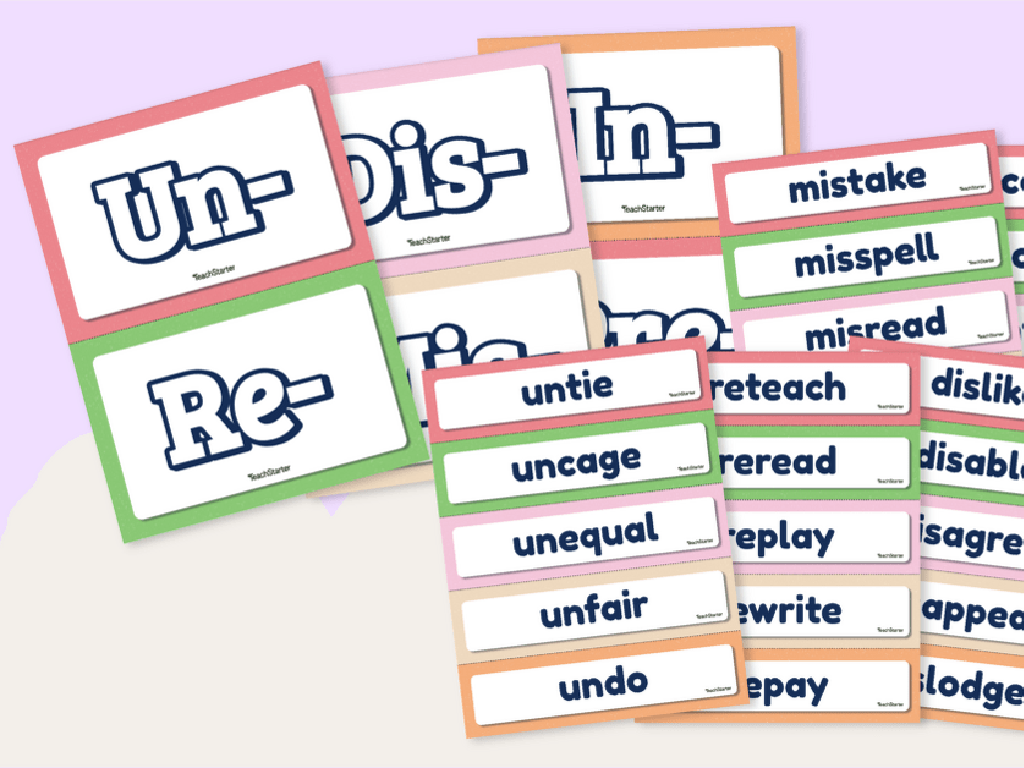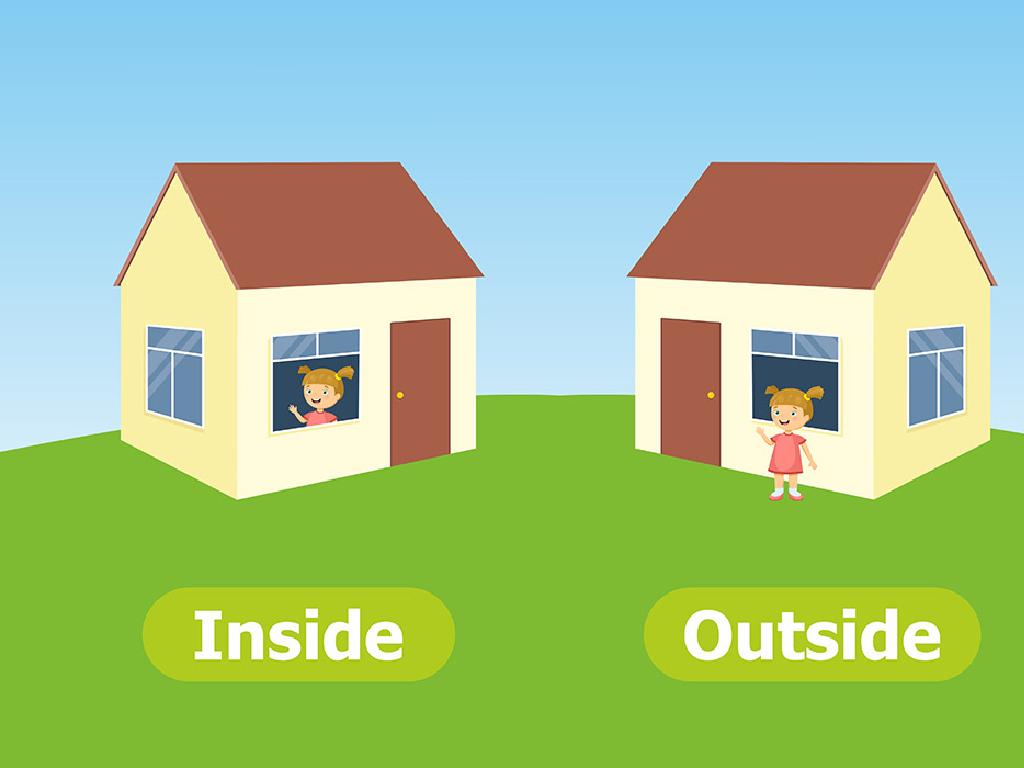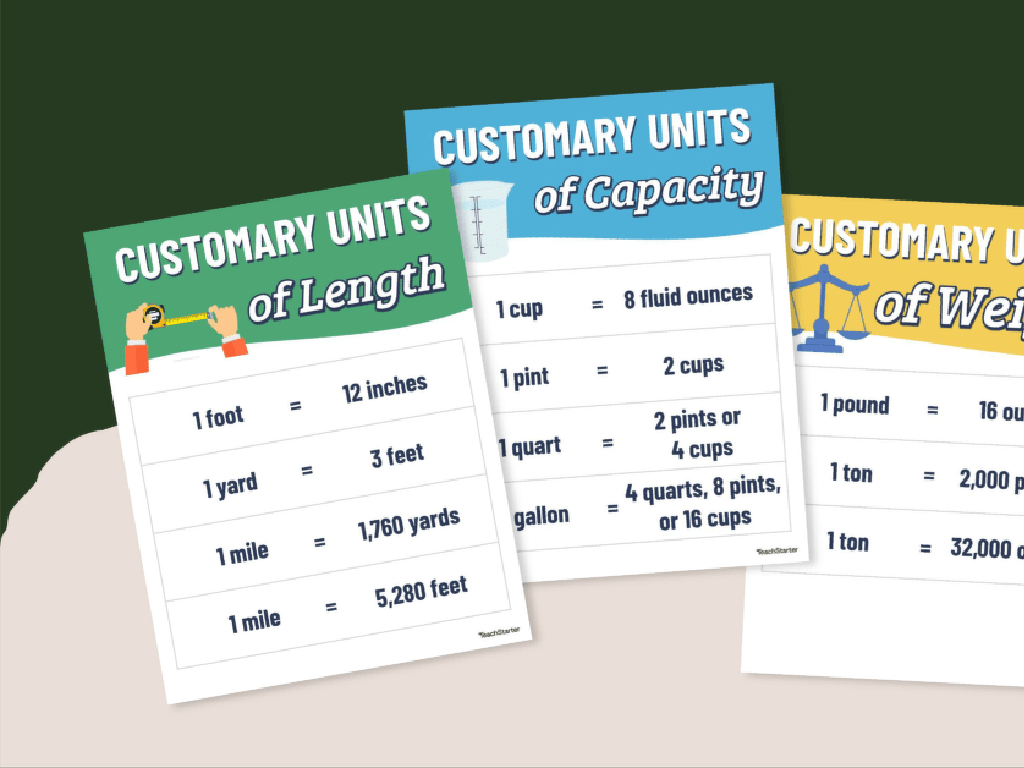Understand Fractions As Division: Word Problems
Subject: Math
Grade: Fifth grade
Topic: Understand Fraction Division
Please LOG IN to download the presentation. Access is available to registered users only.
View More Content
Understanding Fractions as Division
– Fractions represent division
– When we divide a whole into parts, we get a fraction
– Dividing objects creates fractions
– If we cut a pizza into 4 pieces and take 1, we have 1/4 of the pizza
– Real-world division into fractions
– Examples: Sharing snacks equally or dividing money
– Practice with word problems
– Solve problems involving dividing items or quantities
|
This slide introduces the concept that fractions are another way of representing division. When we divide something into equal parts, each part is a fraction of the whole. For instance, if a pizza is cut into 4 equal slices and a person takes one slice, they have 1/4 of the pizza. This is a practical application of fractions as division. Use relatable examples such as dividing a bag of candies among friends or splitting a dollar into quarters. Encourage students to think of their own examples where they’ve shared or divided something equally. Conclude with word problems that apply this concept, reinforcing their understanding through practice.
Understanding Fractions as Division
– A fraction represents division
– A fraction (a/b) shows how many parts (a) of a whole (b)
– Numerator over Denominator
– Top number (numerator) divided by bottom number (denominator)
– Fractions in daily life
– Examples: Pizza slices, sharing candies
– Practice with word problems
– Solve real-world problems using fractions
|
This slide introduces the concept of fractions as a form of division, where the numerator (top number) represents how many parts we have and the denominator (bottom number) represents the total number of equal parts in a whole. Use everyday examples like dividing a pizza into slices or sharing candies among friends to illustrate the concept. Emphasize that fractions are another way of representing division. Encourage students to think of fractions as answers to division problems and prepare them to apply this understanding to solve word problems that they may encounter in real life.
Division as Equal Sharing
– Division means sharing equally
– Fractions represent division
– When we divide, we are finding how many parts each person gets
– Sharing pizzas equally
– If 4 friends share 1 pizza, each gets 1/4 of the pizza
– Dividing candies among friends
– 10 candies divided by 5 friends means each friend gets 2 candies
|
This slide introduces the concept of division as a form of equal sharing and connects it to the idea of fractions. Start by explaining that division is essentially dividing something into equal parts. Then, show how fractions are another way of representing this division. Use relatable examples such as dividing a pizza or candies among a group of friends to illustrate the concept. For instance, if one pizza is shared equally among four friends, each friend gets one-fourth of the pizza, which is represented as 1/4. Similarly, if 10 candies are divided among 5 friends, each friend gets 2 candies. These examples will help students visualize and understand the concept of fractions as division in a tangible way.
Understanding Fractions as Division Through Word Problems
– Reading word problems effectively
– Understand the problem’s story and what it’s asking.
– Identifying key information
– Look for numbers, units, and the question.
– Relating fractions to division
– See fractions as division: If 3 pizzas are shared by 4 kids, each gets 3/4 of a pizza.
– Solving fraction division problems
– Apply what you’ve learned to find answers.
|
This slide introduces students to the concept of interpreting fractions as division within the context of word problems. Emphasize the importance of careful reading to understand the scenario and what the problem is asking. Teach students to identify and underline key numerical information and the question in the problem. Use relatable examples, such as dividing pizzas among friends, to illustrate how fractions represent division. Encourage students to practice by setting up and solving word problems that involve dividing quantities to find a fractional amount per person or unit.
Solving Fraction Division Word Problems
– Example: Pizza division problem
– If 3 friends share 1 pizza equally, how much pizza does each get? 1 pizza ÷ 3 friends
– Step-by-step problem breakdown
– 1. Understand the problem 2. Identify the division 3. Calculate each share
– Solve the problem as a class
– Let’s find out how much pizza each friend gets together!
|
Begin with a relatable example, such as dividing a pizza among friends, to illustrate fractions as division. Walk through the problem step by step: first, ensure students understand the problem; second, identify the division represented by the fraction; and third, perform the calculation to find the solution. Work through the problem as a class, encouraging participation and demonstrating how to apply division to determine the fraction each person receives. This interactive approach helps students grasp the concept of fractions as division in a practical context.
Fraction Division Word Problems
– Solve individual word problems
– Discuss solutions with a partner
– Share how you solved the problem and learn from your partner
– Review various problem-solving methods
– As a class, we’ll look at different ways to solve the problems
– Understand different approaches
– Recognize that there can be multiple ways to approach a problem
|
This slide is focused on engaging students in active practice with fraction division through word problems. Begin with individual practice, allowing students to apply their understanding independently. Then, move to a ‘pair and share’ activity where students can discuss their solutions and thought processes with a partner, fostering peer learning. Following this, conduct a class review where different approaches to the problems are discussed, highlighting that there can be more than one way to reach the correct answer. This will help students see the flexibility in mathematical problem-solving and appreciate diverse methods. Encourage students to explain their reasoning and validate different correct approaches to enhance their conceptual understanding.
Class Activity: Fraction Skits
– Create skits on fractions as division
– Work in groups on word problems
– Act out the problems in skits
– Use props to illustrate dividing a whole into parts
– Present skits to the class
|
This interactive class activity is designed to help students understand the concept of fractions as division through a creative and engaging method. Divide the class into small groups and assign each a different word problem involving fractions as division. Students will create a short skit that acts out the problem and its solution, using props to visually represent the division of items. For example, one group could use slices of pizza to show how a pizza can be divided among a certain number of people, thus illustrating the fraction as division. Encourage students to be clear in their explanation of how the fraction represents division in their skit. After preparation, each group will present their skit to the class, providing a dynamic way to learn from each other. Possible activities could include dividing a set of pencils, sharing a bag of fruit, or splitting a stack of books. This will help students visualize and better grasp the concept of fractions as division.
Wrapping Up: Fractions as Division
– Review of fraction division
– Homework: 5 word problems
– Practice with new problems at home
– Find real-life fraction examples
– Look for fractions in daily life, like cutting a pizza
– Share examples next class
– Discuss how you use fractions to divide things every day
|
As we conclude today’s lesson on understanding fractions as division through word problems, it’s important to recap the key concepts. For homework, students are tasked with solving five additional word problems to reinforce their learning. Encourage students to observe their surroundings and find real-life examples where fractions are used as division, such as dividing a pizza into equal slices or sharing a bag of treats among friends. This will help them relate the abstract concept to tangible experiences. In the next class, students should be prepared to share their examples, fostering a collaborative learning environment where they can learn from each other’s observations.






